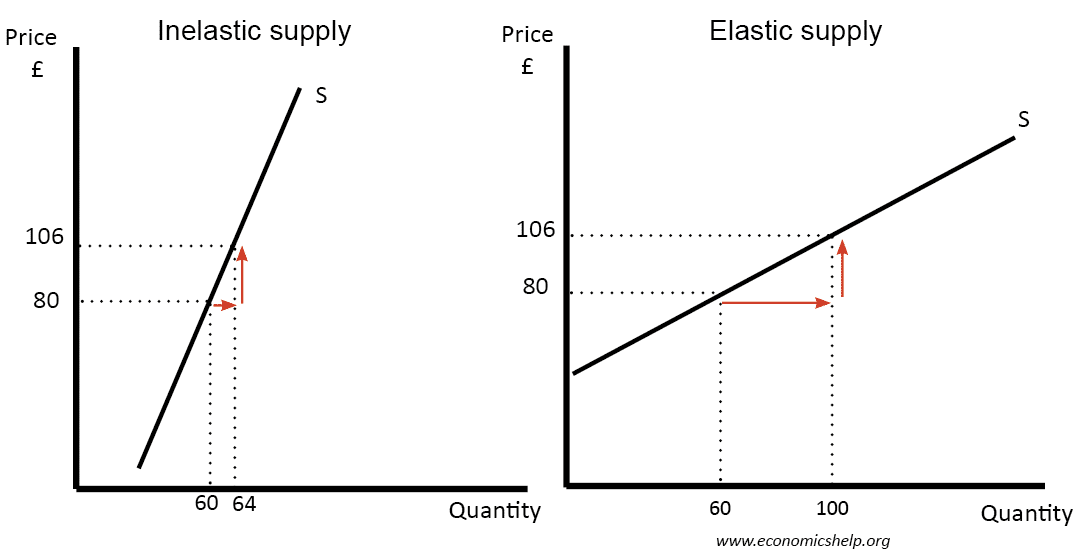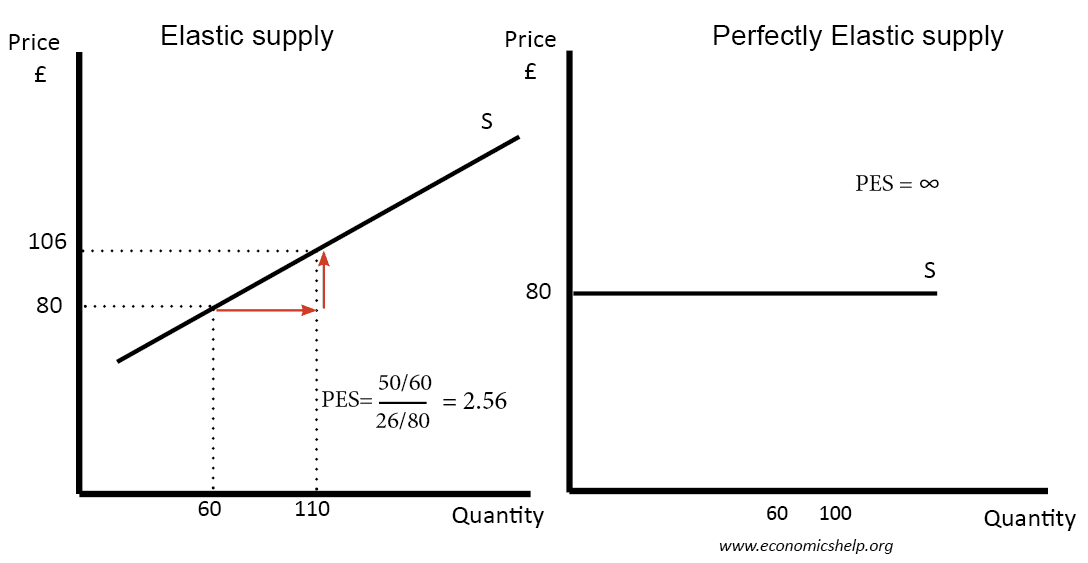Price elasticity of supply measures the responsiveness of quantity supplied to a change in price.
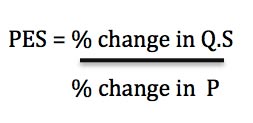
The price elasticity of supply (PES) is measured by % change in Q.S divided by % change in price.
- If the price of a cappuccino increases by 10%, and the supply increases by 20%. We say the PES is 2.0.
- If the price of bananas falls 12% and the quantity supplied falls 2%. We say the PES = 2/12 = 0.16
- Inelastic supply – a change in price causes a smaller proportional change in quantity supply
- Elastic supply – a change in price causes a bigger proportional change in supply
Inelastic supply
This means that an increase in price leads to a smaller % change in supply. Therefore PES <1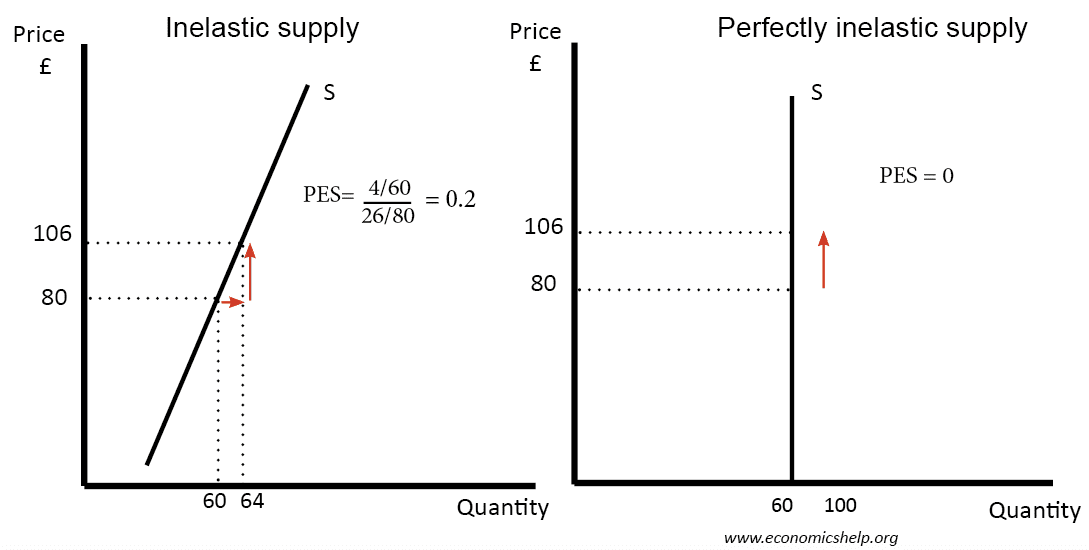
In this case the PES =
- % change in Q.S. = (64-60)/60 = 0.06666
- % change in price = (106-80)/80 = 0.325
- PES = 0.2
Supply could be inelastic for the following reasons
- Firms operating close to full capacity.
- Firms have low levels of stocks, therefore there are no surplus goods to sell.
- In the short term, capital is fixed in the short run e.g. firms do not have time to build a bigger factory.
- If it is difficult to employ factors of production, e.g. if highly skilled labour is needed
- With agricultural products, supply is inelastic in the short run, because it takes at least six months to grow new crops. In September the farmer cannot suddenly produce more potatoes if the price goes up.
More on: inelastic supply
Examples of goods with inelastic supply
- Nuclear reactors – It takes considerable time and expertise to build a new reactor. If there is high demand, few firms would be able to increase output in quick time
- Grapes – Harvest is once a year, so in short-term, supply would be very inelastic.
- Flood defences – If there is heavy rainfall and flooding, there would be high demand for flood defences. But, to supply barriers against the floods cannot occur overnight. It will take many months of construction to build.
- During an economic boom when demand for the goods is very high and firm is running out.
Elastic supply
This occurs when an increase in price leads to a bigger % increase in supply, therefore PES >1
- PES
- % change in Q.S. = 110-60/60 = 0.8333
- % change in Price = 106-80/80 = 0.325
- PES = 2.56
Supply could be elastic for the following reasons
- If there is spare capacity in the factory.
- If there are stocks available.
- In the long run, supply will be more elastic because capital can be varied.
- If it is easy to employ more factors of production.
- If a product can be sold from the internet which increases the scope of international competition and increases options for supply.
Examples of goods with elastic supply
- Fidget spinners. These goods are relatively easy to make, requiring only basic raw materials of plastic. Many manufacturing firms could easily adapt production to increase supply.
- Taxi services. It is relatively easy for people to work as a taxi driver. People can work part-time and only need a qualified driving license. With mobile apps like Uber, it has also become easier to fit consumers with a broader range of options. If price rises, Uber can offer higher wages and encourage more people to come out to work. There are still some supply constraints on very popular days. But, mostly, supply is quite elastic.
- During recession and excess supply. In a recession with a fall in demand, the firm will have unsold goods and a large stock.
Importance of elasticity of supply
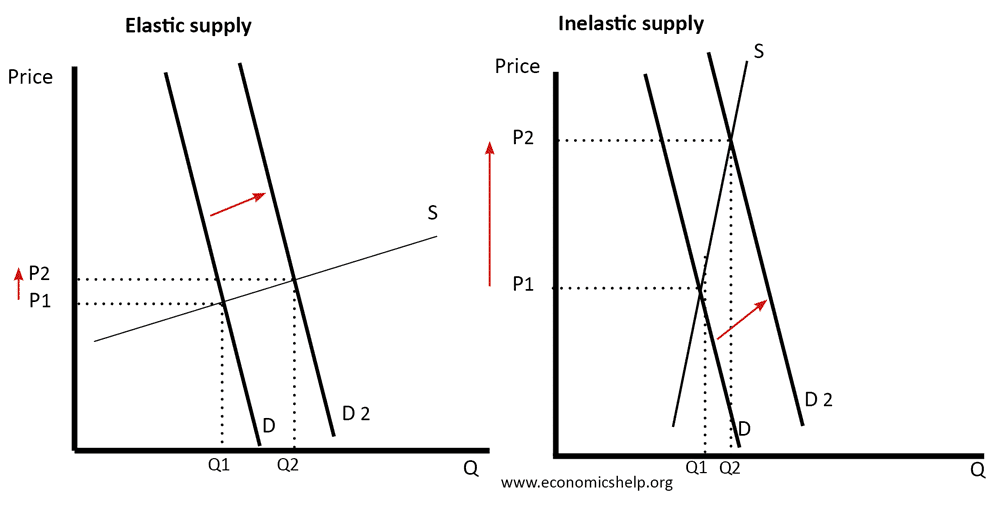
- If supply is elastic, an increase in demand will cause only a small rise in price, but a significant increase in demand.
- If supply is inelastic, an increase in demand will cause a large rise in price but only a small increase in demand.
Question on the price elasticity of supply equation
- If the PES is 2.0 for CDS: and the firm supplied 4,000 when the price was £30.
Q. If the price increased from £30 to £36, what will be the new Q?
- Price increases by £6 (30-36), therefore as a % 6/30 = 0.2 = 20%
- PES = % change in QS/ % change in price
- 2.0 = % change in QS /20
- 40 = % change in QS
- Therefore new Q = 4000 *140/100 = 5,600
Related pages

